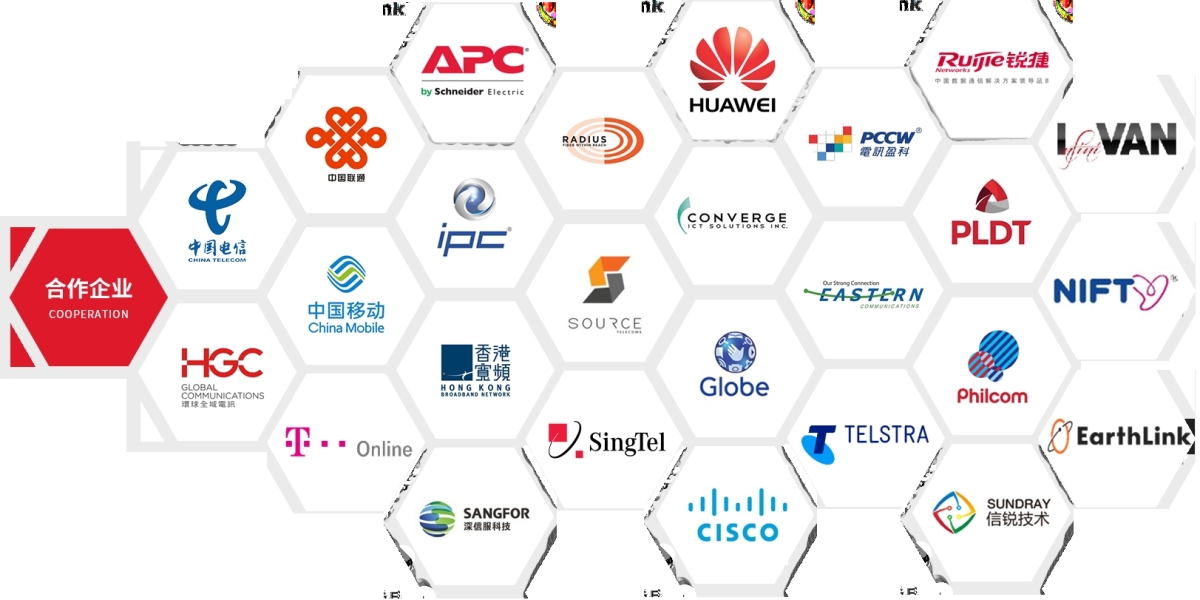Running a rental should be simple, steady and profitable. The biggest savings rarely come from one bold move; they come from consistent habits that prevent problems, shorten voids and keep admin lean. Below is a clear, step-by-step guide written for UK landlords. Each section focuses on actions you can take now, with plain language and practical detail.
Proven ways to reduce costs
Prevent issues with seasonal maintenance
Small seasonal checks stop small faults from turning into big bills.
Step by step
- Quarterly walk-through
- Inspect sinks, baths and ceilings for leaks. Look for mould, failed sealant, loose tiles, blown plaster and sticking windows. Photograph anything you note so you can compare at the next visit.
- Autumn prep
- Clear gutters and downpipes, trim vegetation off walls, test exterior lighting and check roof flashings. Book a roofer if you see slipped tiles.
- Winter readiness
- Draught-proof doors and windows, lag exposed pipes and set a frost-protection programme on the boiler. Leave a simple one-page heating guide for tenants.
- Spring refresh
- Reseal around baths and showers, repaint scuffed areas, clean or replace extractor fan filters and reset trickle vents.
Why it works
Preventative maintenance costs a little now and saves a lot later. It reduces emergency call-outs, limits insurance claims and keeps tenants comfortable, which also supports renewals.
Service boilers and complete safety checks annually
A healthy heating system is cheaper to run and less likely to fail mid-winter.
Step by step
- Book a Gas Safe inspection every year and keep certificates in a digital folder.
- Ask engineers to perform a combustion analysis and test the system water; top up the inhibitor if needed.
- Replace worn TRVs and faulty thermostats in the same visit to avoid repeat labour.
- Add smoke and CO alarm checks to the same appointment for efficiency.
Why it works
Tuned systems use less fuel, and tidy paperwork speeds up lettings and insurance claims.
Standardize durable finishes to cut repairs
Repeatable, robust finishes make every future fix faster and cheaper.
Step by step
- Choose one neutral, wipeable wall colour for all properties and keep the SKU on file.
- Fit LVT or good laminate in high-traffic areas; reserve carpet for bedrooms.
- Use the same handles, taps, hinges and doorstops across homes and keep a labelled spares box.
- Prefer mould-resistant silicone and quality sealants in wet zones.
Why it works
Standardization enables bulk buying, simpler maintenance and quick turnarounds between tenancies.
DIY minor fixes and hire pros for complex work
Save labour where safe; use qualified experts where risk is high.
Step by step
- DIY list: reseal silicone, paint scuffs, tighten hinges, swap tap cartridges, refit toilet seats.
- Pro only: electrics, gas, structural repairs, roofing and any work at height.
- Keep a written boundary so you can act fast without second-guessing.
- Photograph before and after for records and to deposit evidence.
Why it works
You cut routine labour costs without compromising safety or compliance.
Lower energy and running bills
Quick EPC wins with insulation, draught control and LEDs
Simple upgrades reduce consumption immediately.
Step by step
- Top up loft insulation to the recommended depth if missing or compressed.
- Swap all bulbs for LEDs and set timer switches correctly.
- Fit draught excluders to doors and letterboxes; seal gaps around pipes and skirting.
- Use thick curtains with proper lining in living spaces.
Why it works
Lower bills improve tenant satisfaction and make the property more attractive at re-let.
Fit smart heating and hot-water controls
Control beats constant heat.
Step by step
- Install a programmable thermostat and set a sensible daily schedule.
- In larger homes, fit smart TRVs so rooms heat only when occupied.
- Provide a one-page how-to and encourage steady settings rather than frequent on-off spikes.
- Review winter energy use and tweak schedules before the next season.
Why it works
More control means less waste, fewer complaints and a healthier boiler.
Install water-saving taps and showers
Small changes reduce water use and moisture problems.
Step by step
- Fit aerators on basin taps and low-flow shower heads.
- Adjust cistern float valves for a reduced but effective flush where compatible.
- Check for silent leaks in toilets and under-sink connections during inspections.
Why it works
Lower consumption reduces bills in metered homes and keeps humidity in check.
Cut voids and turnover
Start renewals early and keep tenants informed
Good tenants stay when the experience is calm and predictable.
Step by step
- Ninety days before term end, ask about their plans and any concerns.
- Offer options: 12 months, 6 months or periodic, with clear terms and timelines.
- Book minor works before the new term starts to avoid disruption.
- Confirm everything in writing and store it with the tenancy file.
Why it works
Early contact prevents last-minute surprises and helps you plan work around tenant schedules.
Offer fair rent reviews and small retention perks
A modest gesture can cost less than a single empty week.
Step by step
- Check local comparables and your costs; propose a fair, sustainable rent.
- Where justified, include a small perk such as a professional clean or a fresh coat of paint in a key room.
- Present the value of staying: known home, responsive management, and stable costs.
Why it works
Lower churn means fewer listing fees, less void risk and less wear-and-tear from constant move-ins.
Market smart when you must re-let
Get it right once and let quickly.
Step by step
- Stage rooms simply; shoot photos in daylight with squared angles.
- Lead your listing with transport links, storage, parking, energy-saving features and any garden access.
- Price from three recent local comparables and be ready to adjust after the first week.
- Respond to enquiries the same day and pre-qualify before viewings.
Why it works
Sharper marketing and rapid replies cut days on market and reduce viewing fatigue.
Optimise finance and fees
Review your mortgage deal and overpayment options
Interest is often the biggest single expense.
Step by step
- Diary the end date of your fixed rate and begin reviews six months ahead.
- Compare remortgage versus product transfer using total cost, not just rate.
- If cash flow allows, set a small monthly overpayment to trim the term.
- Keep a buffer for rate shocks and stress-test your rent with a sensible margin.
Why it works
Good timing and modest overpayments reduce lifetime interest and protect your cash position.
Compare letting agent packages by outcome
Buy only what you use; know the service level you expect.
Step by step
- List your must-haves: tenant-find, referencing, check-in/out, inspections, full management.
- Request itemized quotes and confirm renewal fees and notice periods.
- Ask for performance metrics: repair response times and arrears escalation steps.
- Review quarterly and change provider if standards slip.
Why it works
Clear expectations keep costs aligned with results.
Use rent-guarantee or legal add-ons only when they pay back
Extras are useful when risk warrants them.
Step by step
- Price the premium against your real exposure and cash reserve.
- Read exclusions and typical claim timelines.
- Buy annually if you need cover; avoid layered, duplicate add-ons.
Why it works
You pay for protection when it matters and avoid unnecessary monthly drains.
Claim every allowable expense in the UK
Organized records are the difference between a tidy profit and missed deductions. Tools can help here—one resource many landlords find practical is free landlord software UK for keeping income, expenses and documents in one place. Use it to centralize receipts, certificates and mileage logs so tax prep is faster and less stressful.
Track repairs versus improvements correctly
Get the classification right, and you keep more of your income.
Step by step
- Treat like-for-like fixes as repairs and betterment as improvements; write the reason in your notes.
- Attach photos or old part invoices to support the decision.
- Keep separate tags for each category in your records.
Why it works
Clear evidence makes the year-end smoother and helps if HMRC asks for details.
Record mileage, advertising, phone and software costs
Small costs compound over a year.
Step by step
- Log mileage for inspections, contractor meetings and key collections with date, purpose and distance.
- Save invoices for advertising, tenant checks, inventories and professional services.
- Allocate a fair business portion of phone and broadband.
Why it works
You claim legitimate expenses you might otherwise overlook.
Keep digital receipts and a tidy file system
Paper gets lost; digital lasts.
Step by step
- Use a simple folder structure: property → year → month.
- Snap receipts the same day and upload them to the correct folder.
- Maintain a year-end checklist: rent schedule, expenses total, bank interest, insurance, gas and electrical certificates.
Why it works
You finish tax tasks faster and reduce accountant time.
Smarter sourcing and repairs
Build a trusted trades list and get three quotes for planned work
Reliability reduces downtime and re-work.
Step by step
- Keep two contacts per trade: plumbing, electrics, heating, roofing and general maintenance.
- For non-urgent jobs, get three like-for-like quotes with scope, materials and warranty in writing.
- Track each job’s response time and tenant feedback to refine the list.
Why it works
Better pricing and dependable outcomes lower lifetime maintenance costs.
Buy common spares in sensible bulk
The right stock prevents delays.
Step by step
- Store paint, silicone, filler, doorstops, smoke alarm batteries and standard tap cartridges.
- Keep labelled boxes per property or maintain a small lock-up.
- Rotate stock and note re-order points.
Why it works
Fewer last-minute store runs and fewer chargeable revisits from trades.
Use warranties and service plans where they reduce risk
Let coverage carry predictable costs.
Step by step
- Register every appliance for a full warranty within 30 days of purchase.
- Consider a boiler plan if the unit is older or parts are expensive.
- Diary renewal dates and keep only plans that deliver clear value.
Why it works
You cap exposure on high-risk items and avoid surprise bills.
Furnishing and fit-out that lasts
Choose durable flooring and washable paint
Longevity keeps refurbishment cycles long.
Step by step
- Use LVT or quality laminate in living areas and halls; keep spare packs for repairs.
- Fit bleach-cleanable carpet in bedrooms with robust underlay.
- Paint with washable emulsions and label tins by room and date.
Why it works
Hard-wearing finishes look good for longer and repair easily between lets.
Standardise appliances with reliable warranties
One brand, fewer headaches.
Step by step
- Choose a mid-range brand offering two to five years’ cover.
- Standardise sizes across properties for quick swaps.
- Keep a record of serial numbers, purchase dates and manuals.
Why it works
Fewer call-backs and faster replacements reduce disruption and cost.
Decide on unfurnished versus part-furnished by local demand
Match the market, not assumptions.
Step by step
- Scan local listings and note typical furnishing levels.
- Where furniture adds value, keep it minimal, robust and easily replaced.
- Build an inventory with photos at check-in for clarity.
Why it works
You attract the right tenants and minimize damage risk.
Streamline admin with simple tech
Online rent collection, reminders and arrears tracking
Automate routine steps so errors vanish.
Step by step
- Use standing orders or online payments with strict reference rules.
- Automate rent-day reminders and late triggers at +3, +7 and +14 days.
- Keep a running arrears log that records every contact attempt.
Why it works
Predictable cash flow and clear histories make arrears management calmer.
Self-service maintenance requests and status updates
A single route stops long email chains.
Step by step
- Offer one maintenance form link with required fields and photo upload.
- Auto-assign priority: emergency, urgent, routine.
- Send status updates at each stage so tenants know the next steps.
Why it works
Faster triage, fewer missed details and better tenant confidence.
Templates for inspections, inventories and handovers
Consistency saves time and protects deposits.
Step by step
- Use a standard inspection checklist with photos and action notes.
- Reuse an inventory template that lists every item and its condition scale.
- Keep a handover sheet with meter readings, key sets issued and appliance guides.
Why it works
Repeatable processes reduce disputes and keep standards high.
Right-sized insurance
Compare landlord insurance annually and set a sensible excess
A short review brings real savings.
Step by step
- Note your renewal month and compare at least three providers.
- Adjust your excess to balance premium and risk realistically.
- Check rebuild cost accuracy, accidental damage options and loss-of-rent terms.
- Keep photos and inventories current to support any claim.
Why it works
You avoid overpaying while maintaining robust cover.
Check exclusions and avoid duplicate cover
Overlap wastes money.
Step by step
- Read exclusions for unoccupied periods, escape of water and subsidence.
- If your agent includes cover, match it against your own to remove duplication.
- Align policy renewal dates with safety checks for smoother admin.
Why it works
Lean protection with no double spend keeps premiums tidy.
Conclusion
Start with low-effort wins: seasonal checks, LEDs, draught-proofing and a boiler service. Then protect income by retaining good tenants through early renewals, fair reviews and clear communication. Standardise finishes, fixtures and appliances to make every repair quick and predictable. Tighten your finance position with a well-timed mortgage review and agent packages that match your needs. Keep immaculate records so every allowable cost is captured. Finally, let light-touch technology handle rent collection, maintenance requests and templates so your time goes into value, not admin.
Follow this plan step by step. Keep notes, store receipts digitally, and repeat the cycle each quarter. Your costs fall, voids shrink, and the rental runs like a well-kept business—steady, simple and profitable.









